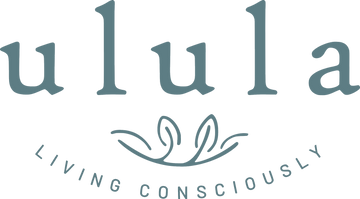Growing for good #ululagrows - wonderful Nasturtiums

Nasturtium
Nasturtium is one of the quickest and easiest hardy annual flowers to grow, producing masses of vividly coloured blooms through summer and autumn.
Nasturtiums not only look spectacular, but the flowers, leaves and seeds are edible too, and look so beautiful in a salad. Both the leaves and petals of the nasturtium plant are packed with nutrition, containing high levels of vitamin C. It has the ability to improve the immune system, tackling sore throats, coughs, and colds, as well as bacterial and fungal infections.
Bees love them and white butterfly caterpillars too!
Nasturtiums are also brilliant companion plants for your garden. Companion planting is an organic method of maintaining a natural balance in your garden, aiding pollination and keeping pest numbers down.
Most companion plants are strongly scented and confuse pests looking for their host plant. Others attract beneficial insects, such as ladybirds and lacewings, which prey on aphids.
How to grow nasturtiums
Nasturtiums are ideal for sunny spots around the garden, including pots. Free-draining soil is best, and they thrive on poor soils.
You can sow nasturtiums directly where they are to flower, as they're fast-growing, or into little pots. Sow the seeds 1.5 cm deep into moist soil to speed germination, so water the pot or ground before planting if conditions are dry. Seeds can be sown in mid-spring and you can carry on sowing until mid-summer to ensure flowers right up to the first frosts. Thin the seedlings to 30 cm apart if sowing direct or if sowing into pots simply sow one seed per pot and transplant outside when all risk of frost has passed.
Nasturtiums are particularly attractive to blackfly. By planting them alongside bean crops you can lure aphids away from your crop. Spray them off with a jet of water or let ladybirds, hoverflies and lacewings remove them for you.
| Crop | Flowers |
| Nasturtium | 4-6 weeks to flower from sowing; deadheading prolongs flowering; will continue flowering until the frosts |
Slugs & Snails
Be careful, as slugs and snails like to eat the new shoots. You may like to protect seedlings by cutting the top off a plastic bottle and placing it over them, until they look strong enough to fend off attacks!
Other options for slug control include nematodes, garlic spray, beer traps, wool pellets, grit or broken up eggshells, or for those hardy souls - going out at night with a torch and picking them off by hand!
How to plant the seeds
The nasturtium seeds are easy for little hands to pick up. Plant one per pot, using your finger or the tip of the dibber to make a hole to a depth of about 1.5cm. Drop the seed in, then cover with the compost. Do not forget to label your seeds!
Put you tray or plate on a windowsill which is not too warm, keep the compost nicely moist (plants need to drink just like we do) - it will need checking every day - and remember to speak words of encouragement, or even better sing to your seeds to help them grow. You should see your seedlings start to emerge within a couple of weeks!
Homemade Labels
Lolly pop sticks make excellent plant labels. Save them up over the summer for use next spring. You can also use old yogurt pots or cream pots cut into strips, but be careful of sharp edges.

